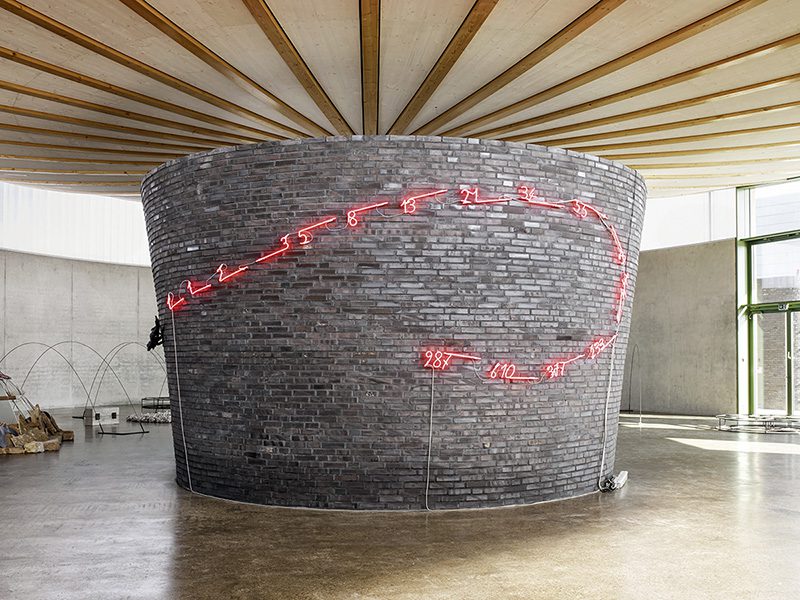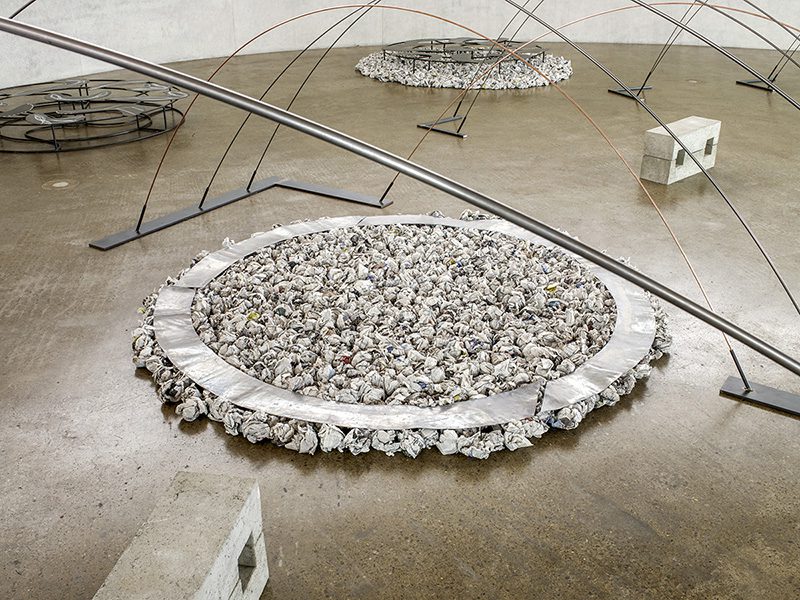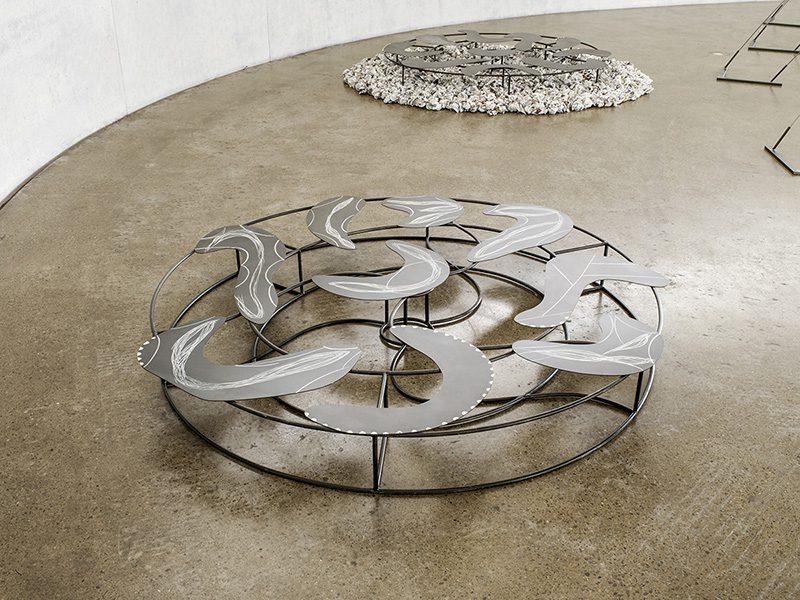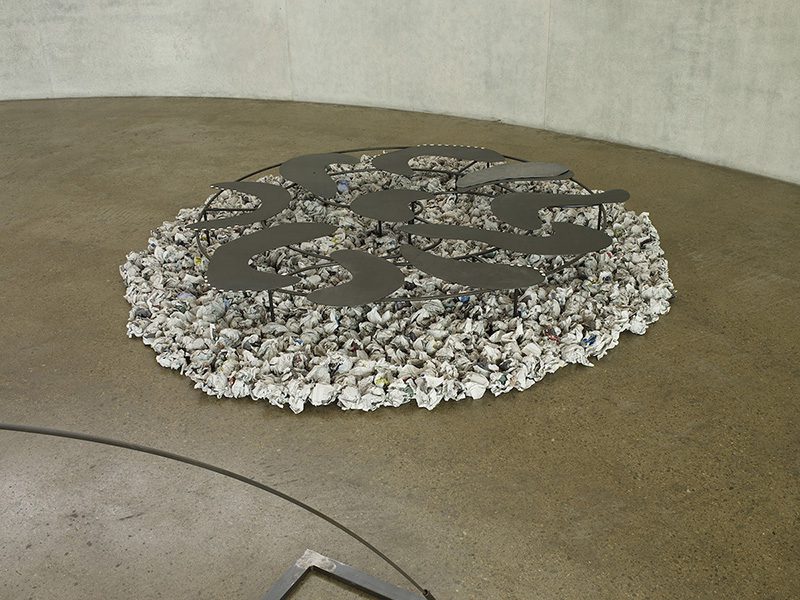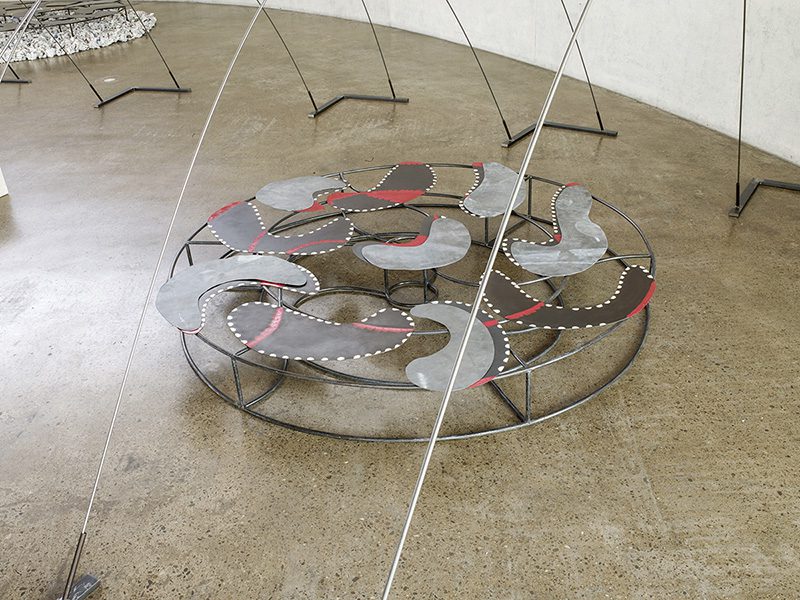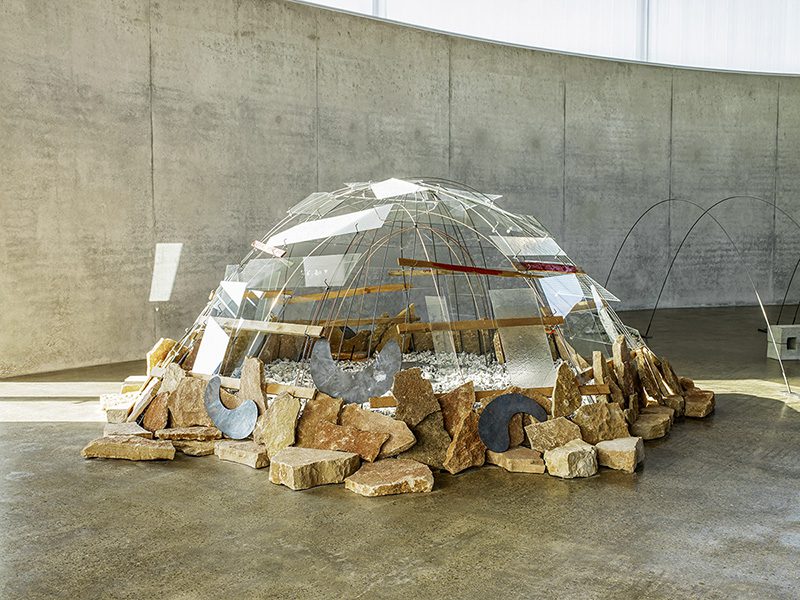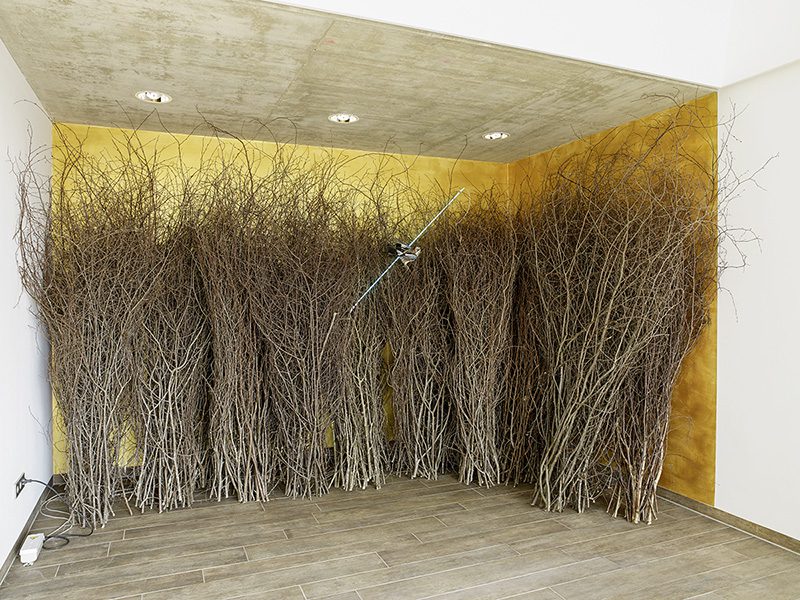ART-PRESENTATION: Mario Merz
 “Is space curved or straight?” In posing this question, Mario Merz was addressing not only the issue of the built environment, but also the fundamental situation of our existence in the world. Curved, boundless space fascinated Mario Merz because, for him, it represented the poetic counterpoint to the linearity of finite, constructed space.
“Is space curved or straight?” In posing this question, Mario Merz was addressing not only the issue of the built environment, but also the fundamental situation of our existence in the world. Curved, boundless space fascinated Mario Merz because, for him, it represented the poetic counterpoint to the linearity of finite, constructed space.
By Efi Michalarou
Photo: Thomas Schütte Foundation Archive
The form of the igloo, which Merz embraced, represents an existential concept far removed from that of the cubic space. Indeed, space seems to be compressed within the igloo, whose dynamic curves rise to converge at the crest. Another concept that Merz adopted was the Fibonacci sequence, which follows a similarly steep curve in emulation of the organisational systems found in nature. This approach even seems to spill over into the paintings that Merz created on large swathes of cloth. Instead of stretching them on frames like canvas, he spread them across the walls like visual carpets. The igloo in the work of Mario Merz is not a closed structure, but a transparent one. It is built of intersecting arcs, some with glazing between the upper areas, while the base is fringed by loose stone slabs. His work “Suoni in circolo, foglie in circolo, suoni in circolo, alberi in circolo…”, which occupies one half of the Skulpturenhalle, addresses the circular forms found in nature. The elliptical form of the hall itself, with its curved roof and the rounded chamber at its centre, is the ideal place for this, as the elements of the work do not jar against corners and angles. Circles, arcs and igloo thus continue the formal language of the exhibition space in their own way. The Fibonacci sequence appears in a wide variety of forms in Merz’ works, mostly as luminous neon tubes, arranged in neat vertical rows, they stand for the principle of rapidly increasing growth, while in the form of the curved trace left by the alligator on the wall, they symbolise the energy of nature. They encroach upon the painted figures, spread across the outstretched wings of a heron or trace the gait of the panther on a reclining cone. What is invariably evident is the widely varied materials Merz uses (glass, stone, steel, bundles of sticks, neon tubes, painted clothes) is that they relate to one another, in this way, they circumscribe what Arte Povera means: freedom to choose the materials by which to convey a message through the medium of the exhibition.
Info: Curateor: Dieter Schwarz, Thomas Schütte Foundation’s Skulpturenhalle, Berger Weg 16, Neuss/Holzheim, Duration: 10/4-14/8/16, Days & Hours: Fri–Sun 10:00-18:00, http://thomas-schuette-stiftung.de

